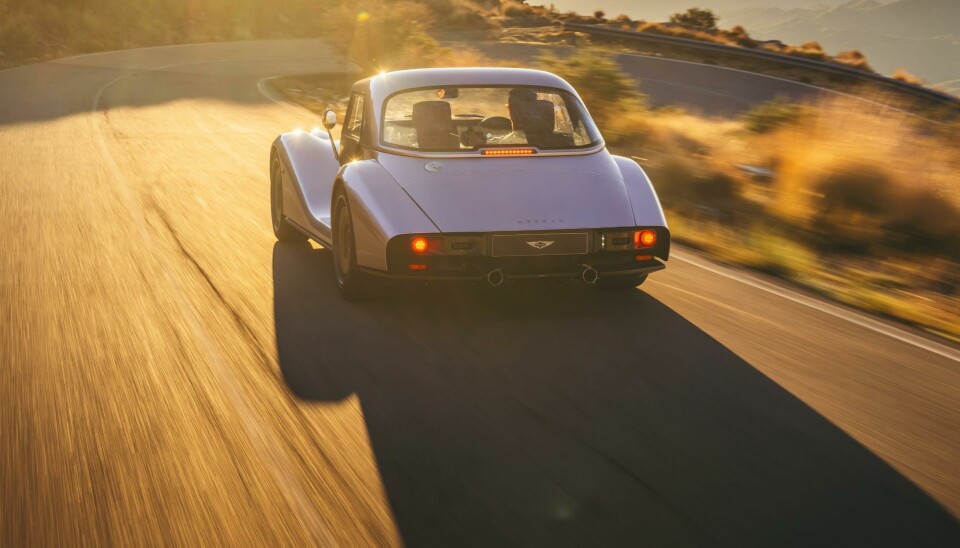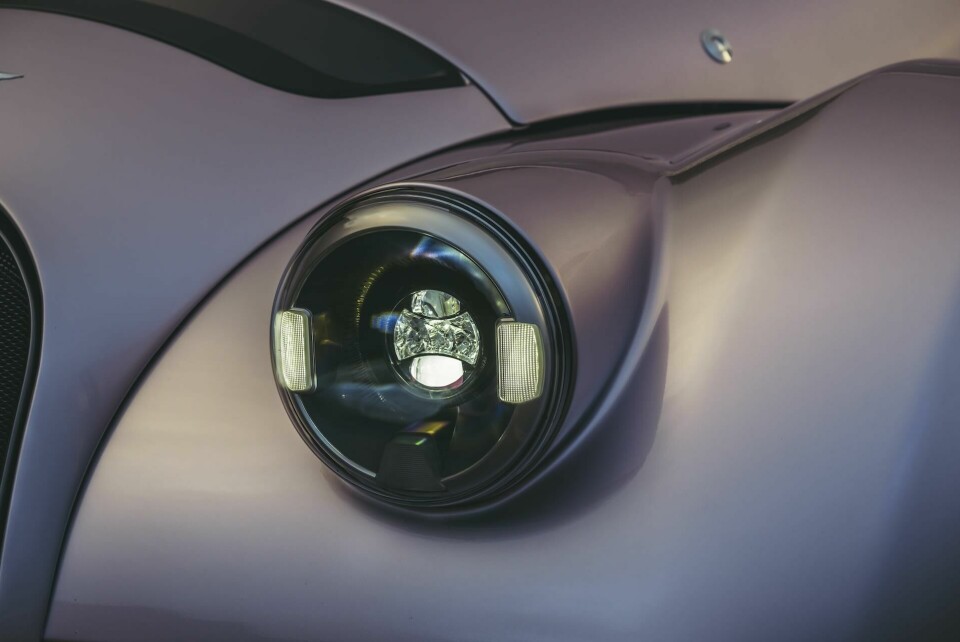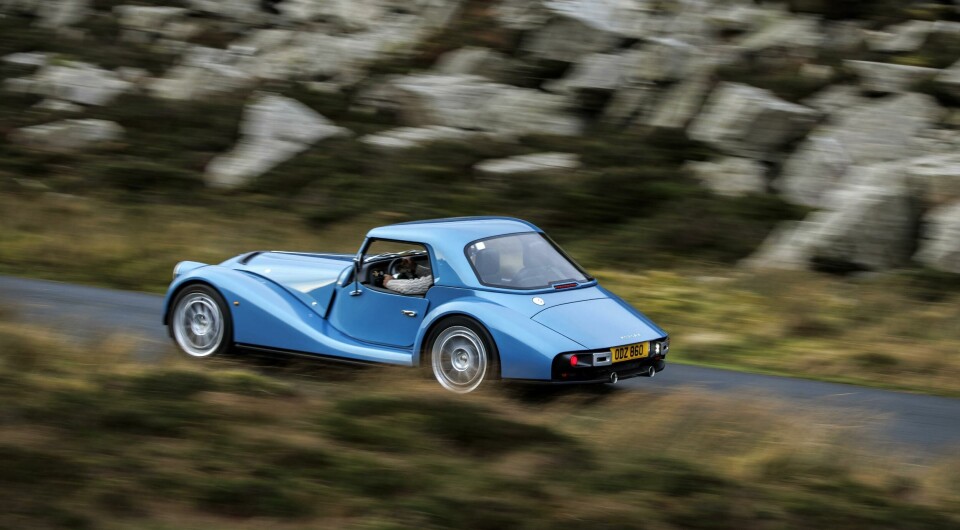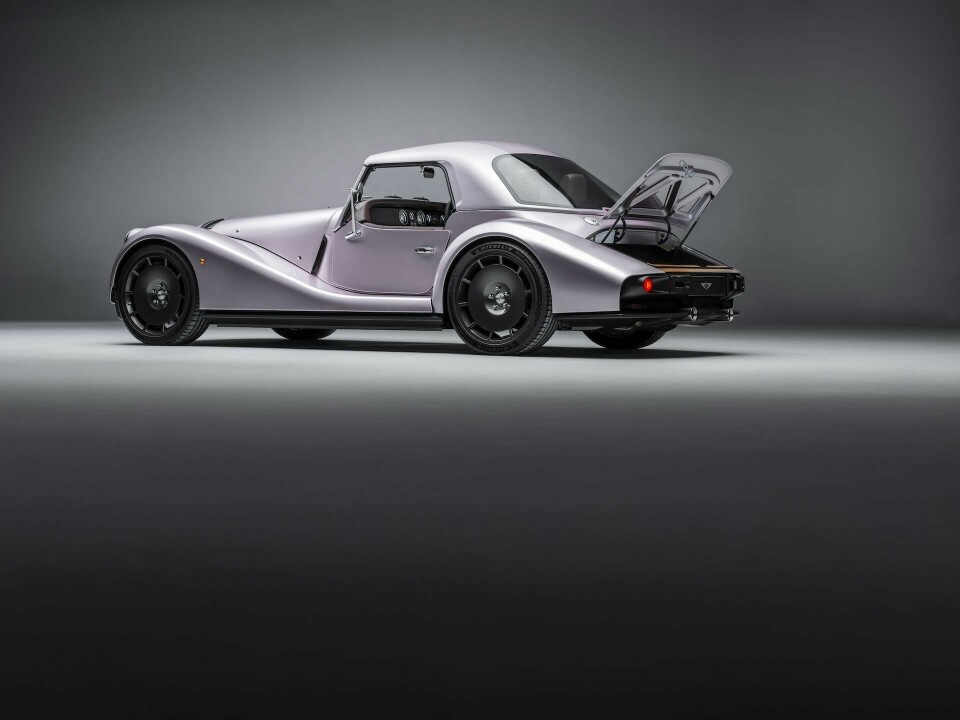
Morgan modernises with new Supersport flagship
Traditional British marque, Morgan Motor Company, has introduced a slightly more modern design language on its new flagship, the Supersport.
Morgan is renowned for its traditional values and craftsmanship. Occasionally it goes slightly off-track and comes up with something different, such as the Aero 8, but even then, the looks were unmistakably Morgan. That hasn’t changed with the introduction of the brand’s new flagship, the Supersport.
The name dates back to 1927 and Morgan has typically used it for performance-oriented versions. Morgan’s Le Mans winning car of the 1960s was a Plus Four Supersport, but the new model adopts the name as a brand new proposition.
“We wanted to have a car that is the best driving car we can develop and make it a more usable Morgan,” says Matthew Hole, managing director of Morgan. “It’s really important for us to have a Morgan that can be used as much of the year as possible. If you’ve got such a beautiful and interesting car in your garage, it would be great if you can use it most of the time.”
It’s still immediately recognisable as a Morgan, but the very traditional styling of the Plus Six it replaces, has evolved into something a bit more modern. Achieving this with a marque that has been built on such traditional design is no easy task, but it was one that fell to chief design officer, Jonathan Wells and his team.
At first glance, you can see what appears to be the influence of the limited run Morgan Midsummer from 2024, but in fact it was the other way around. Design of the Supersport started back in 2019 but Wells and Pininfarina previewed some elements of the new design language in the coachbuilt Midsummer.
Completely new from the ground up, Supersport has the same footprint as the Plus Six, with many of the new design features being informed by the engineering team, which worked closer than ever with design. Communicating the engineering achievements in the aesthetics was a key challenge for Wells.

“Something we started with Super 3 is to communicate a sense of honesty in the design, rather than blending modernity with tradition and ending up with something that is a bit pastiche,” he told Car Design News at a preview of the new model. “Our objective is to celebrate the technical engineering parts and then celebrate the coachbuilt body on top of that.”
It has resulted in the most extensively handcrafted aluminium body in Morgan’s history, with more wood than ever before too. Every surface has evolved and Wells says they paid more attention to controlling shut lines. Panels have subtle creases that retain a sense of tradition rather than, as Wells says, being “of the moment.”
There’s a true cab-rear design with the H-point very close to the lateral on the rear wheel. Supersport also boasts the longest bonnet Morgan has ever produced, which features a number of new aerodynamic elements, as does the rest of the car, particularly when it comes to lifting up the volumes, most noticeably in the tail.
Look even closer and Morgan aficionados will see another major change. Traditionally the company has used a seven-inch headlamp that is readily available off the shelf and has been used by Land Rover and other marques.
For Supersport, the team designed and engineered almost every component in-house, including the headlamps which are now eight-inch units, an increase in size that addresses the dilution of the classic proportions over the decades as the cars have grown.

Another challenge was being able to offer a factory hard-top. In the past this has always been a retrospective addition to Morgan models, often not having the best fit and finish.
It’s more of an experience than just holding your finger down on a plastic button
Focusing more on the side screens and seals has enabled Wells and the team to come up with a more cohesive design. The hard-top is made from carbon fibre, the only piece of the bodywork that isn’t aluminium. It also features a large piece of glass that is also a monumental change for the company: for the first time in it’s 115-year history, Morgan has a curved piece of glass.

What hasn’t changed is the ability to remove the top third of the doors, something Wells and the team debated and then stuck with. “One of the unique attributes of driving a Morgan is that you can take the upper third of the door off and hang your elbow out, even with the roof up and a bit of shade,” he says.
“It’s a really nice way to enjoy driving adventures with a connection to the outdoors. Having the removable side screen and taking it on and off is quite an exciting feature for us and more of an experience than just holding your finger down on a plastic button to open and close a window electrically.”

Now though there is actually somewhere to store those doors because the Supersport has a proper boot. Even inside there is a design feature, with the ash wood frame exposed within it. The rear also features more nods to Morgan’s history, including the overriders, which act as an element of crash protection but also allow a luggage rack to be mounted on them.
Again the eagle eyed might notice another significant difference at the rear. For the first time there is no Morgan wings badge, instead the name is spelled out in a new font, fitting in with the latest styling trend. That font has been extracted from the original Morgan logo and is called ‘HFS’. It is also used on the bespoke Smiths instruments in the interior.
That interior features a very traditional look and feel, combined with discreet elements of technology. The digital display in the IP is perhaps the most obvious piece of tech, but the Supersport is also the first Morgan to feature hands-free phone connectivity. There’s the latest in Sennheiser audio tech too, but it is the materials that enhance the experience. Naturally this includes pristine wood, as well as chrome and Scottish leather.
There are new colour choices too and while Morgan has focused on its new lilac, personally I think Bahama Blue suits it better. While it might look like Corvette’s Nassau Blue, it’s definitely not says Wells with a smile.
Replacing the Plus Six was never going to be an easy task, but evolving the traditional design language was always going to be even tougher. Midsummer received a great reception that must have shown Wells and the team that they were on the right track. Supersport might be more modern, but it is unmistakably a Morgan.


































